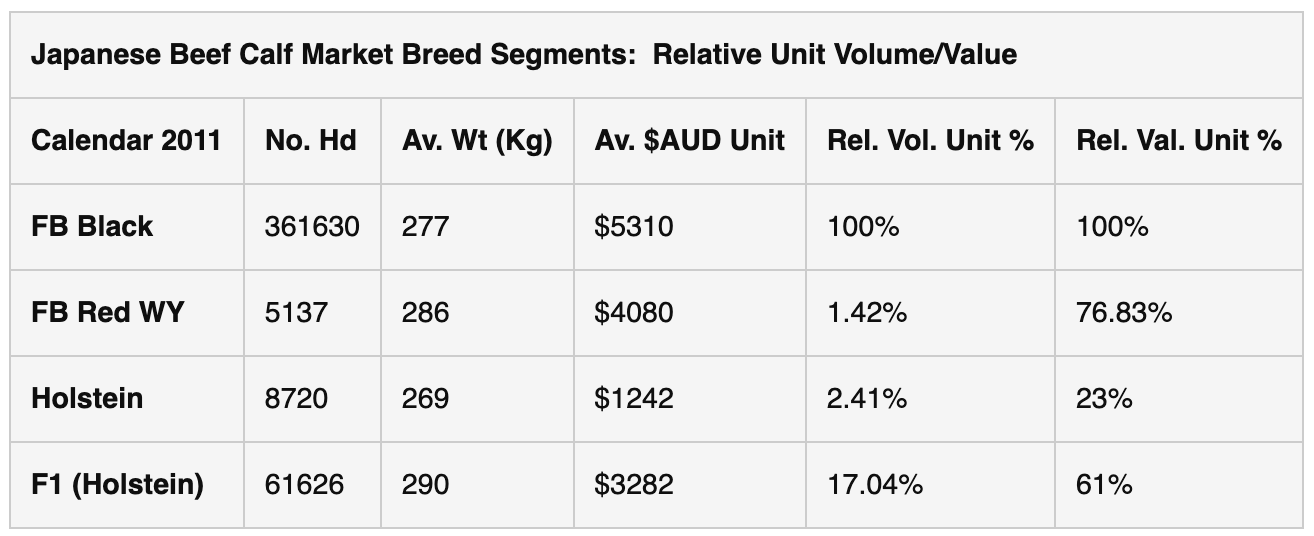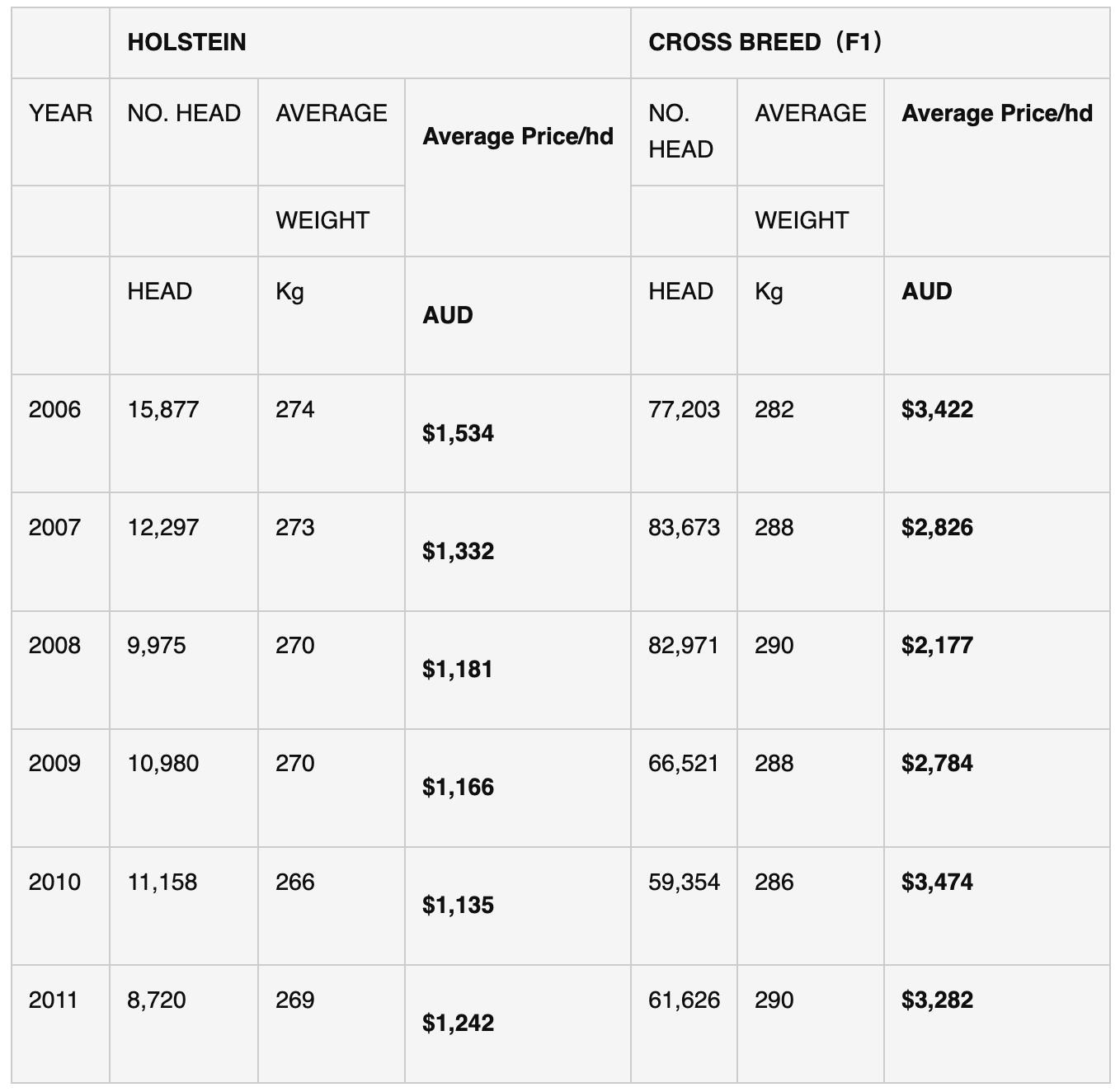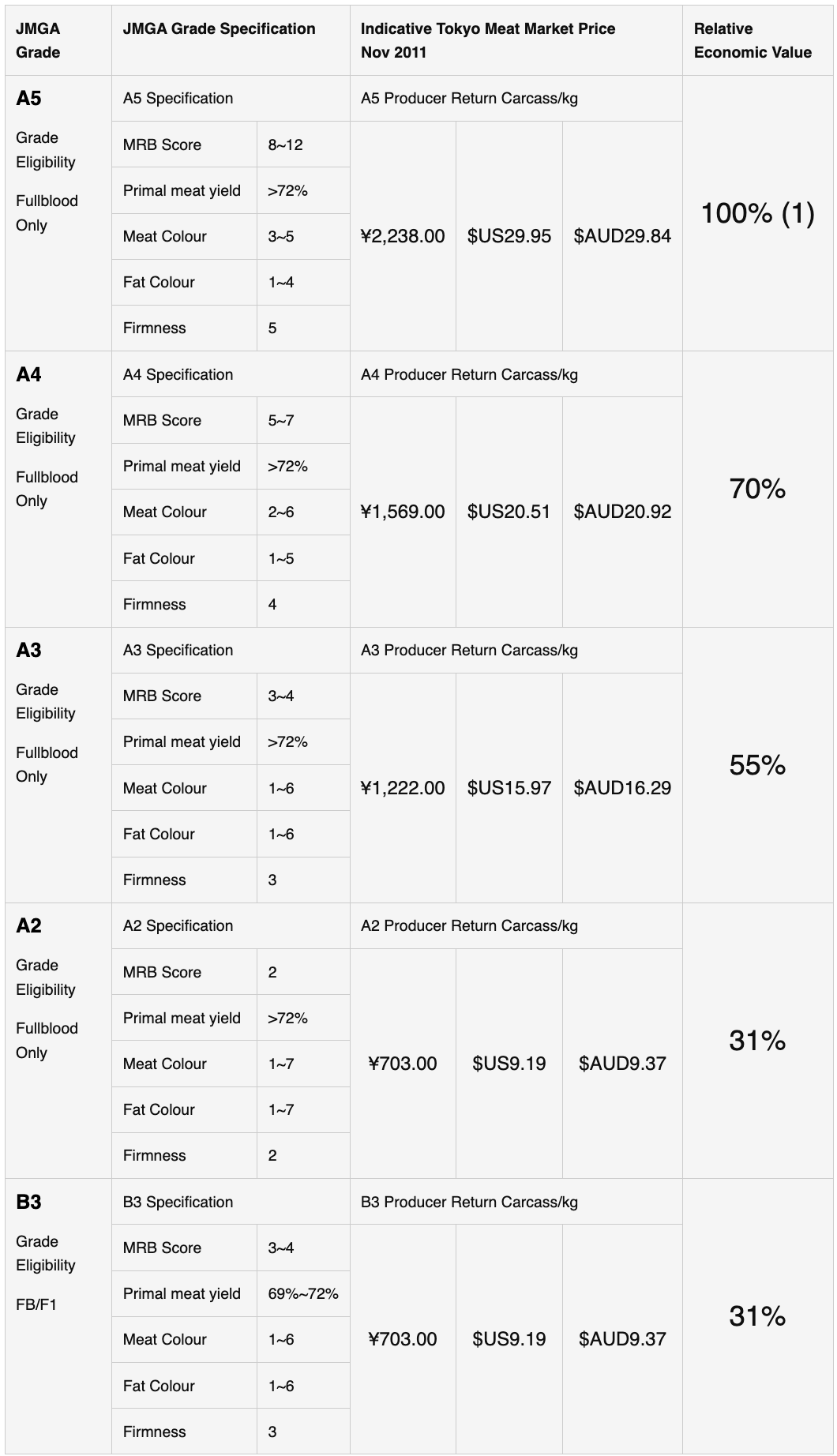Japanese Market Data
The following page outlines Wagyu price/quality for calves and beef.
Japanese Calf Markets – Livestock Price/Quality Relativity
This subsection is based on Japanese Government (MAFF)livestock census data, which demonstrates that the key price/quality relationships in Japanese national feeder calf markets are defined by breeding as the key predictor for future JMGA grading value.
Fullblood Black Wagyu feeders make up by far the greatest volume of sales, and greatest unit value is also achieved by Black Wagyu. Actual unit values and volumes of other important breed categories are shown both in actual terms and relative to Black Wagyu. Both ages and weights at calf market are similar across breeds.
Holstein calf market volumes are NOT indicative of actual sales. The majority of Holstein feeder cattle are produced in vertical systems starting at calf rearing units and progressing direct to feedlots. The Holstein numbers below therefore describe a small spot market. Non-Holstein F1 calves are not traded in these markets.
Small Holstein spot market
(Click for larger picture).
A six year snapshot of the Japanese national calf market is provided below. The Holstein section represents 100% Holstein-breed calves trading outside the mainstream vertical production system described above.
Six year snapshot of the Japanese national calf market
(Click for larger picture).
Japanese Beef Markets: Wagyu Price/Quality Segmentation
The foundation of Japanese Wagyu quality leadership is the national meat grading system (JMGA ), applied at wholesale level, by which individual carcasses are measured and ranked. Grading starts with breed type/sex, then measurement of meat qualities such as marbling, yield, meat colour & texture. A succinct English-language web site here provides full details of the system itself.
The system enables major quality and subsequent price differentiation between individual fullblood qualities and also differing livestock categories, such as fullblood vs crossbred (or F1), to which fullblood eating qualities – and therefore fullblood grades – do NOT apply. By defining a wide range of qualities for differing culinary applications at a variety of price-points, the system ensures the broadest possible market (optimising market volume and producer opportunity), and because all data is collated independently, accurate market analysis is also enabled. The result is comprehensive QA for domestic consumers and global food service buyers which ensures consistent customer experience with all Japanese Wagyu products.
The Grade/Price Comparison table below depicts the system at work, demonstrating actual grade/price relationships in the Tokyo Meat Market in late 2011. As indicated by the ‘JMGA Grade’ columns, meat quality measurement extends far beyond ‘MRB score’. Yield is a critically important measure in an era of expensive cattle feeding programs, and by international standards Japanese Wagyu ‘Primal Meat Yield’ percentages are extraordinarily high.
Tokyo Meat Market: Wagyu Carcass Grade/Price Comparison, 2011.
(Click for larger picture).
Breed/price relationships are worth study. In this cognoscenti market, JMGA-graded Wagyu F1 (Holstein), is worth less than a third of a premium fullblood carcass on a per carcass kg basis. Even given that the best Western-produced fullblood carcasses would grade A3-A4 JMGA, F1 (Holstein) qualities deliver an average market value < 50% of the finest Western-equivalent fullbloods. F1 (other breeds) are not quoted at all.
From a quality assurance perspective, for the most demanding traditional Japanese cuisine or experimental fusion chefs worldwide, the quality range within the JMGA system clearly enables superior provedore selection. In Tokyo, the largest quality/volume segment is usually A4. Following is a snapshot of comparative volume scaling by grade segments for an indicative period in 2011, followed by expanded Tokyo price detail for a range of JMGA qualities:
Indicative month segmentation by Grade/Livestock category based on 2011 MAFF data
(Click for larger picture).
Let’s Talk About Your Wagyu Breeding Plan
We'll Find the Right Wagyu Breeding Solution for You
Call us:






